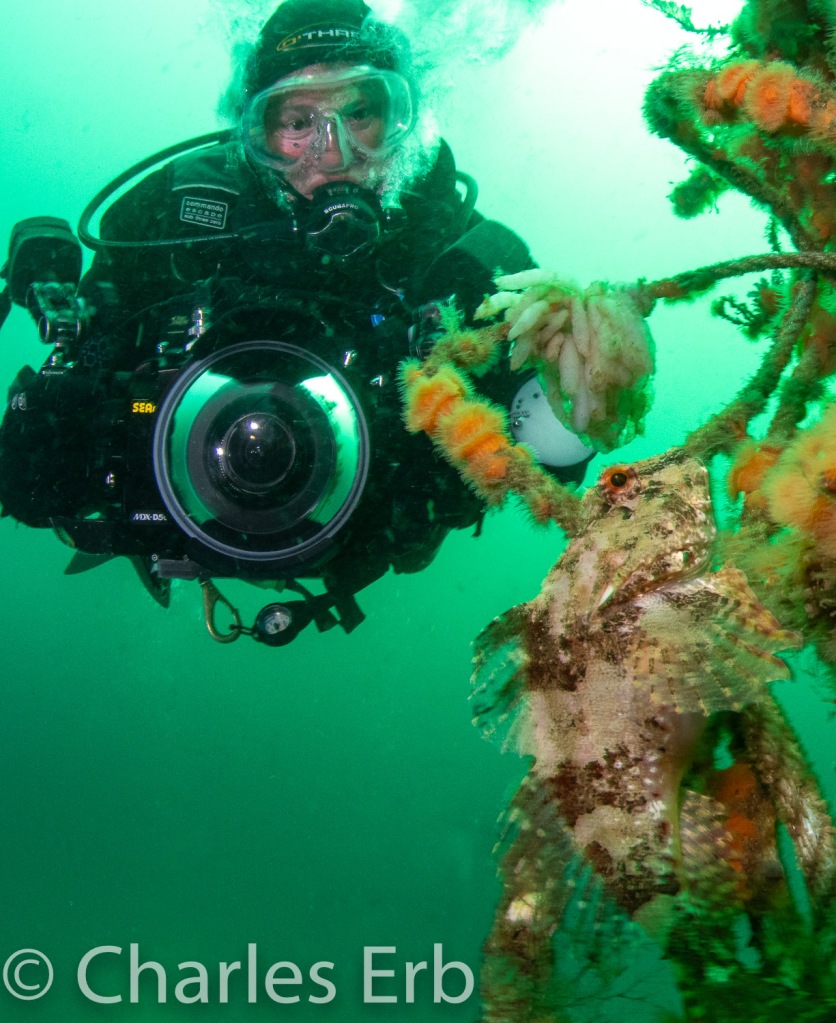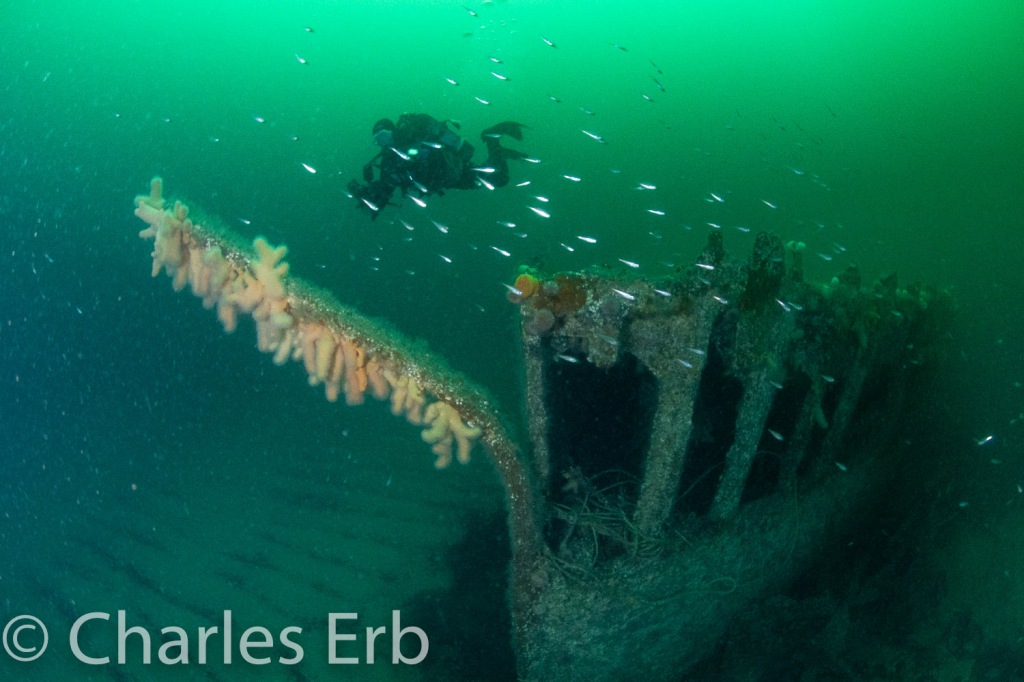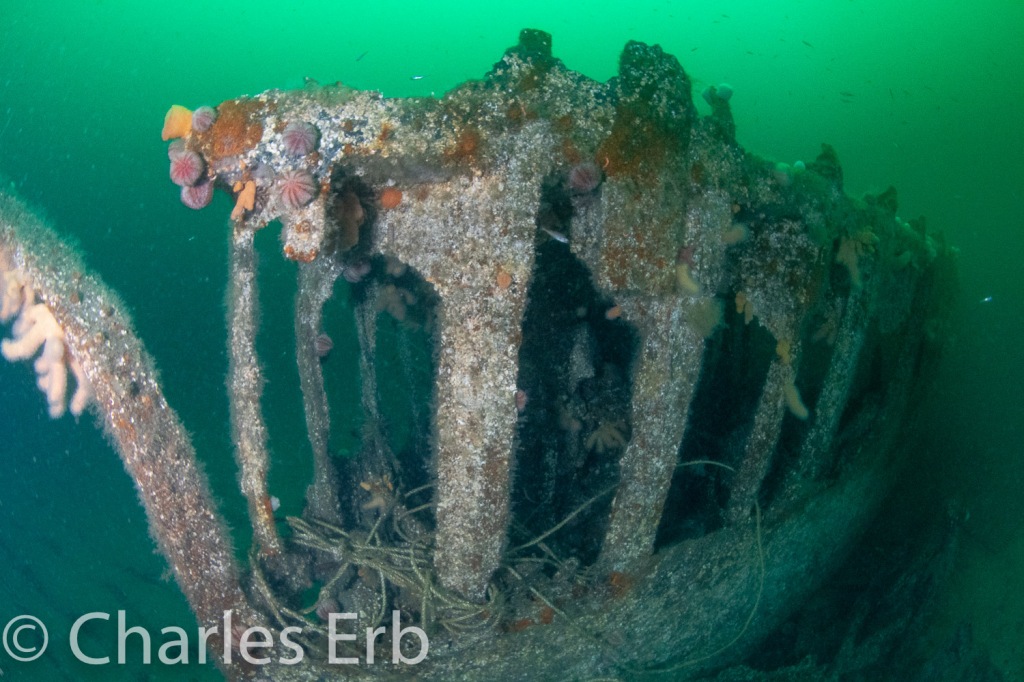Our final day aboard MV Clasina began with a dive on another klondiker (like the Lunokhods-1 we saw earlier in the week), the Pionersk. This huge fishing factory ship foundered in the 1990s, but is rather shallower than many of the other wrecks we dived. Consequently, it is more kelp encrusted and sadly the vis was rather poor, so I was limited to very close focus photography. The fact that we were so disappointed with the vis on this dive (“normal” UK vis – approx 3-4m) just goes to show how good the visibility had been on the other dives of this trip. Good weather – calm sea and bright light – helps, as does the sandy sea bed under most of the wrecks we saw; however, the lack of large amounts of algae in the water here is a massive help too (many of my shots from this week have a bluish tint, rather than the pea soup we have come to expect in the UK.


Our week aboard Clasina finished on a highlight with a return full circle to the first site we saw – the Fraoch Ban. This marvellously intact and upright wreck on white sand did not disappoint, and we saw angler fish and octopus in addition to the flatfish on the sand, spiny spider crabs on the hull and shoals of small fish around the superstructure we saw last time. A fitting end to an excellent stay aboard MV Clasina.





The dives were finished early, to allow the disembarkation of the mountain of gear which ten divers bring onto a live aboard. Rob and I bade farewell to our buddies from East Cheshire BSAC, as they were on the afternoon ferry. It was a more leisurely end to the day for us, as we had a couple more days left on Shetland.

Links:











































